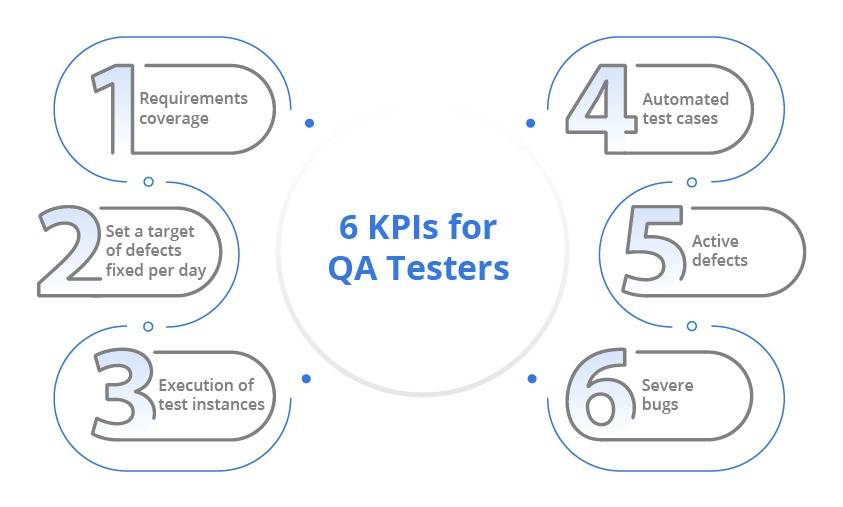As a team lead, it is your duty to maximize your Quality Assurance (QA) team productivity.
How do you measure QA team performance?
You need to objectively measure QA metrics first, and then share progress with the management. If you don’t measure productivity of your QA team, then chances are that you wouldn’t know if things have started moving south. You want to know who is actually working in your team and bringing about the desired results, as well as be cognizant of those who are not pulling their weight, and consequently, not producing expected results.
Having this knowledge allows you to give appropriate appreciation and feedback, so that your team members can work accordingly and improve in the areas they are lacking in. Closely monitoring productivity keeps you abreast of the areas that need to be worked upon and how to resolve them accordingly.
Furthermore, you need to establish QA metrics for good performance with the management, so that you can review them periodically. Having an established criterion is helpful as it allows you to gauge performance of all QA team members according to the same metrics and measure it against a set benchmark. That being said, you can still set different goals and agendas for team members, based on their individual tasks.
Here’s what Kualitatem’s Service Delivery Manager, Ishfaq Zia, a QA enthusiast, had to say about the way he manages and oversees his QA team using performance metrics:
“It’s important to get your clients on board with your process from the start. Once the expectations are understood, our approach is to prepare a high-level demo and then highlight how we solve their problem. We usually are on a time crunch and there’s a lot of work involved, especially if it is something the team isn’t familiar with. Having metrics in place, the team completes the breakdown of their long term goals into weekly goals which then translates into meeting timelines.”
What is productivity?
Simply put, productivity of any QA team is portrayed by the highest quality of software within timelines. After all, “Quality Assurance” is called as such for a reason; it refers to methods that indicate the topmost quality of a product or service, with minimum number of defects or issues.
Now comes the question: how do we gauge the software quality?
This translates into the following main areas:
- Thoroughness of test cases: The test cases should be thoroughly covered, as this is linked with high software quality.
- Speed:
- Test execution speed
- Defect fixing speed
Greater speed, for both test execution and defect fixing, depicts higher productivity.
- Product Quality: There should be no defects found in the production stage.
Here is what Zia had to say regarding reducing the number of bugs before production:
“Exhaustive or complete testing is impossible. Occasionally, a client comes around after several rounds of our own testing and locates a major bug that we should’ve picked on. While there is always a possibility, ensuring a complete understanding of the product and utilizing proper tools is essential to negate this risk as much as possible”.
Furthermore, a test management tool, such as Kualitee, makes things easier by showing your progress as team and as an individual, both. After all, a significant part of individual effort contributes to team effort, so both go hand in hand to some extent.
When do you know that productivity is good?
Research industry benchmarks for your industry/project
Do thorough research on your industry standards and benchmarks, and set goals according to them. Remember that your aim is to rise in a competitive industry, which is why it becomes important to remain cognizant of these benchmarks.
Take input from stakeholders
Your stakeholders include a wide pool of people–including team members, managers, clients, etc. Instead of getting feedback from only one party, be open to receiving input from all the stakeholders. This way, you can take note of points that you may not have realized on your own as they are not relevant to you directly, or that may have slipped your eye. Thus, be open and receptive to hearing suggestions and feedback.
Set expectations early regarding good and bad performance
Instead of only setting expectations regarding your QA team members’ productivity, for yourself, you can also convey those expectations to them. Having that knowledge will motivate them to work more efficiently or however required, as they would strive to live up to those expectations, as well as avoid those factors or behaviours that indicate deteriorating performance.
Using KPIs to measure productivity
Productivity of your QA team can be assessed by measuring Key Performance Indicators (KPIs).

Defining KPIs helps monitor the quality of software in terms of the three factors discussed earlier; i.e. test coverage, speed, and number of defects found. Setting the appropriate KPIs for your team will help you keep track of progress, while also being able to gauge team productivity more easily.
Setting KPIs enables teams to establish clear objectives and benchmarks for evaluating their performance against goals/standards that they have set. By measuring requirements coverage, defects fixed, automated test cases and other factors, QA teams can assess the effectiveness of their testing efforts and identify areas for improvement and thus be able to deliver better quality products to their end users.


























